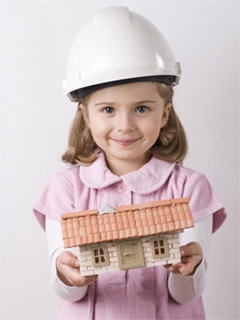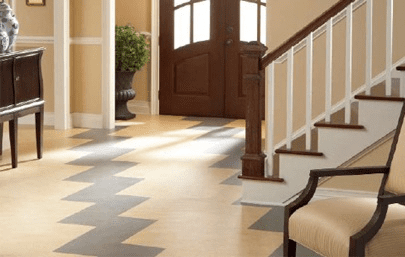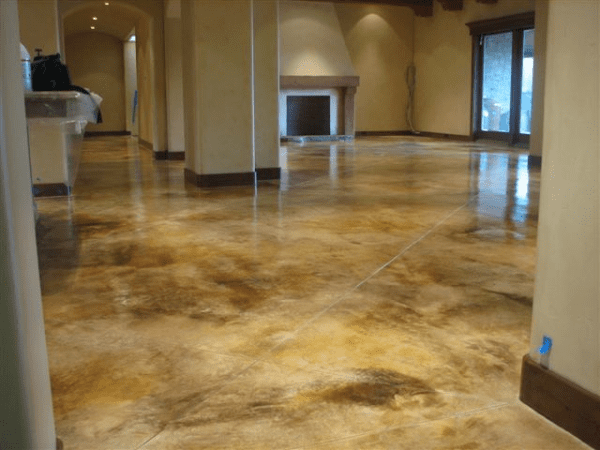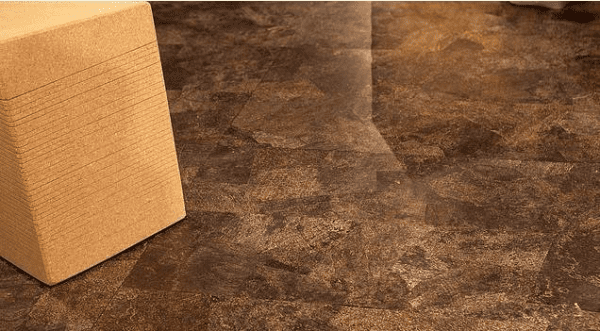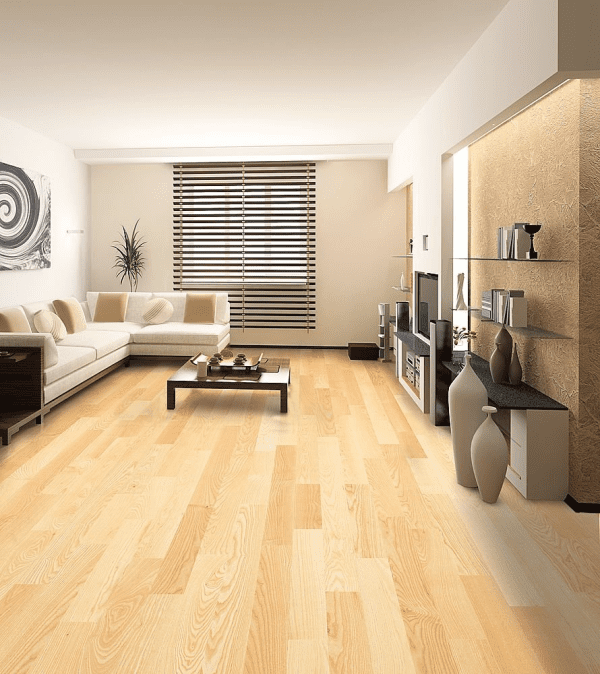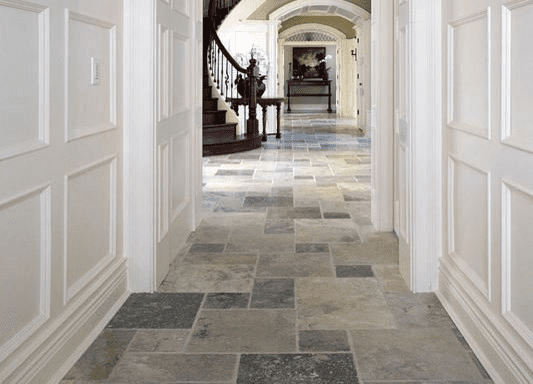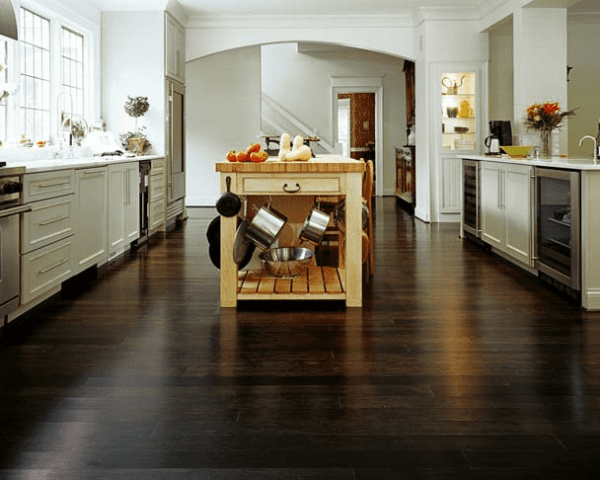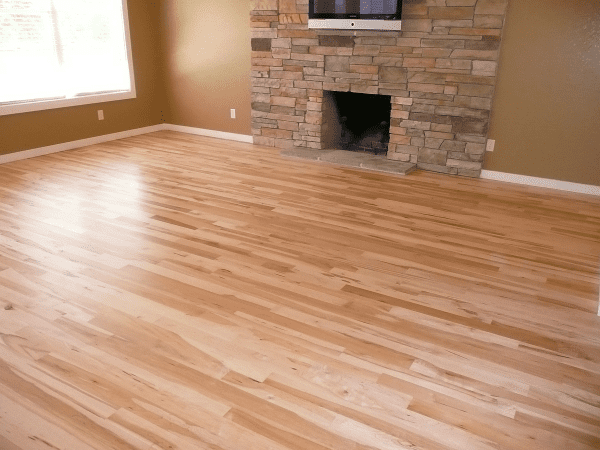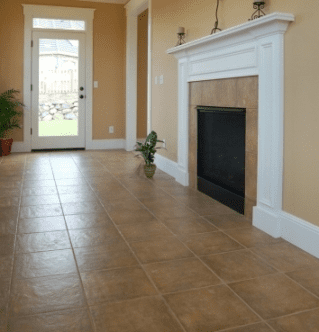We demand a lot from our floors. They’re battered from below with electric radiant heat and from above with shoes and pet’s claws, they constantly have sharp utensils and sticky liquids dropped on them, and they’re scoured with harsh cleaners. Yet even given all of this abuse, we still expect them to look shiny and new. Though there are numerous choices of flooring, when assessing performance, looks, and application, there are definitely some options that come out ahead of the others. Following is a line-up of some of the most popular flooring types out there, ranked from good to better to best.
Good: Laminate
Laminate is inexpensive and comes in a vast array of exotic colors, but it is ultimately a photo-realistic image laminated to a piece of thin wood composite. This means that it’s pre-sealed, and that if water penetrates between the joints it will swell, bow, and likely peel apart. It is a low-wearing surface and has about a five-year lifespan for most high-traffic applications.
Good: Vinyl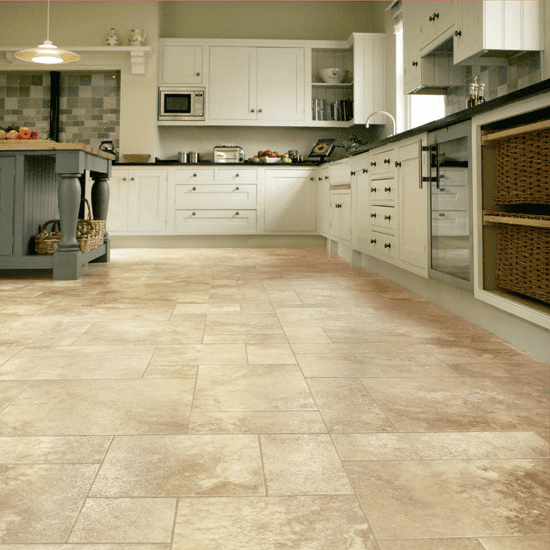
Vinyl, not to be confused or categorized with linoleum, is a synthetic plastic material. It comes in so many colors, finishes, and simulated materials that no one would know that vinyl disguised as wood plank is anything but real wood. It needs to be laid down on an even substrate with an adhesive, and it is relatively impervious.
Good: Linoleum 
Linoleum is a natural material and comes from linseed oil, a renewable resource. It is available in tile format or 54” wide sheets. The patterns can be limited, but the colors are amazing. It’s warmer and softer to the touch . Should you choose linoleum as your flooring, make sure to carefully plan good places for your connecting seams, and not in the middle of doorways.
Better: Concrete 
Concrete looks beautiful, can have a colorant added, and can be polished or sealed from a matte to a high-gloss finish. The material can crack under flex, however, so proper installation should include a backing substrate that moves with the finish material, not the structure or foundation. Since local suppliers always install concrete by hand, it’s important to check references before purchasing. Concrete works great with radiant heat, but it’s difficult to repair if it cracks.
Better: Cork 
Cork is a natural product that is hypoallergenic, sustainable, and soft underfoot. It can be easily installed with a proper underlay and radiant heat. It has a limited color palette, however, and a random structural pattern.
Better: Engineered Hardwood
Engineered hardwoods are made of a core of hardwood with a top layer measuring ¼” – ¾” thick of hardwood veneer. It is a great pre-finished material and it’s more economical than solid wood, but it does have limited re-finishing capabilities due to the veneered top layer. Some of the manufacturers of this flooring do not have an ideal manufacturing process (the top coat is toxic and applied by hand in the factory) and the substrate can be of poor quality.
Best: Stone
Marble (including travertine) and granite are ideal stone flooring options. They wear beautifully, have an excellent structural pattern, and are available in a wide variety of sizes and formats. Mortar and grout selection are very important to consider when installing stone floors. Also, it’s important to always select a superior underlay to prevent cracking and unnecessary maintenance. Stone is excellent with radiant heat, and with regular re-sealing, these floors will last a lifetime. When designing with stone, however, keep in mind that thresholds higher than ½” should be avoided because they’ll be a tripping hazard. Slate, although it is stone, is likely the least practical flooring for any interior application because it is naturally uneven.
Best: Hardwood
Site-finished hardwood is a dream flooring option. It’s full-thickness wood, stained and finished on-site. It can be matched to existing hardwood flooring quite easily for an authentic look throughout a whole house. It lends itself well to under-lay and radiant heat, and water problems are a thing of the past with correct modern appliance and fixture installations. Its downsides? Wood isn’t the most sustainable option, it can be tricky to install on concrete slabs, and it’s by far one of the most expensive flooring choices. But overall, this is a lifetime choice and well worth the investment.
Best: Bamboo
Bamboo is a rapidly renewed resource. It’s usually available as a solid plank material, pre-finished in a limited color pallet. It comes in three or so patterns (edge, end, and strand) and is naturally anti-bacterial, hypoallergenic, and slightly harder than hardwood.
Best: Tile
Tile options have exploded in the past ten years. Tile can be ceramic, porcelain, or quarry tiles (each have their own traffic wear and performance preferences) and this material comes in almost infinite color possibilities, pattern selection, and sizes. Floor tiles need to be large format to minimize grout lines, and the same installation issues as those with stone tiles need to be considered. Like stone, it can be slippery when wet and requires some maintenance, but for the most part, tile is relatively worry-free.
Final Tips
Carpet should never be installed in a kitchen because it is porous and can cause unwanted wood rotting. Bumpy stone surfaces should also be avoided because they are uneven, which can cause installation delays and additional charges.In terms of when to lay the flooring in the construction process, flooring should be installed before cabinetry goes in, because flooring provides a stable and sealed surface for leveling cabinetry (which is the most important part of installations). Timing the floors before cabinets also avoids unnecessary service trips, reschedules, and/or additional charges for having to cut in around toe-kicks and cabinet details. It is also much less labor—and thus will save you money—to install flooring to finished walls.
As a Design+Build General Contractor, I offer my clients a one-stop shopping approach to all of their home remodeling projects. I work with my clients from initial conception of a project through its completion. Every aspect of the job is managed by me and my professional crew. You will be included in every step of the design process until the final drawings are completed. No detail is left to chance. General Contractor Specializing in Kitchen & Bathroom Design and Remodeling Throughout the Los Angeles area.
Written By:

Offer Steuer
President
OTM Designs & Remodeling, Inc.
For more information you may contact us via email at service@otm1designs.com or you may call us at 888-981-1415. Our website is www.otm1designs.com


